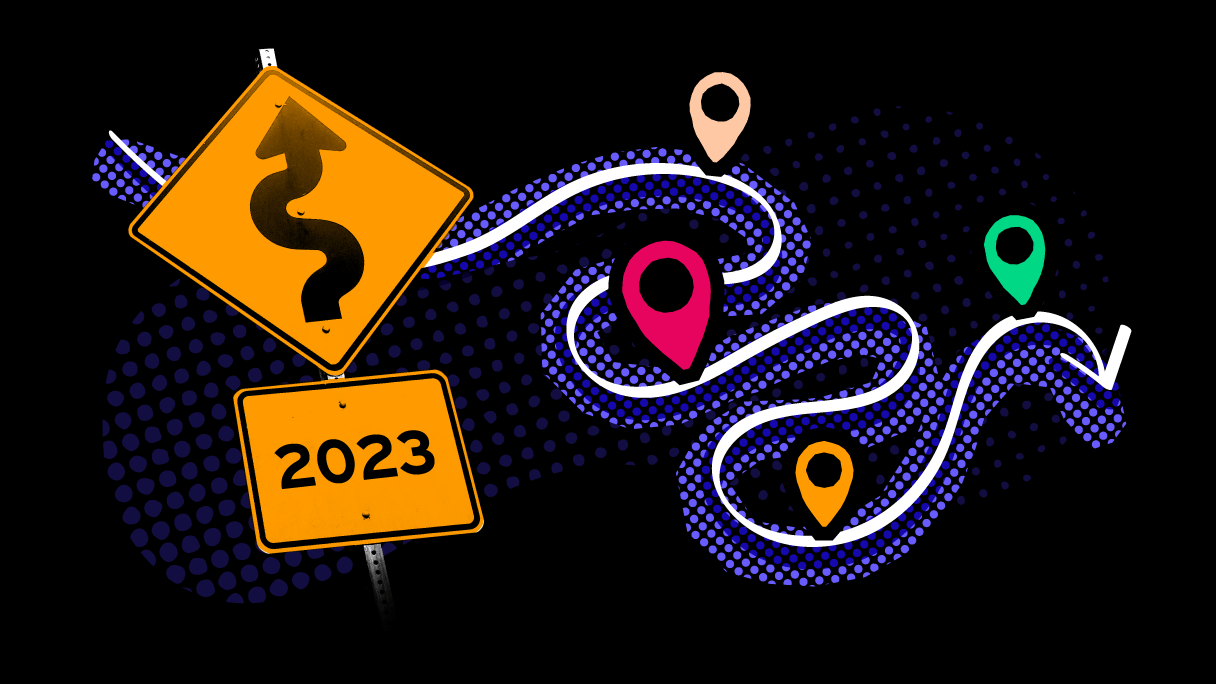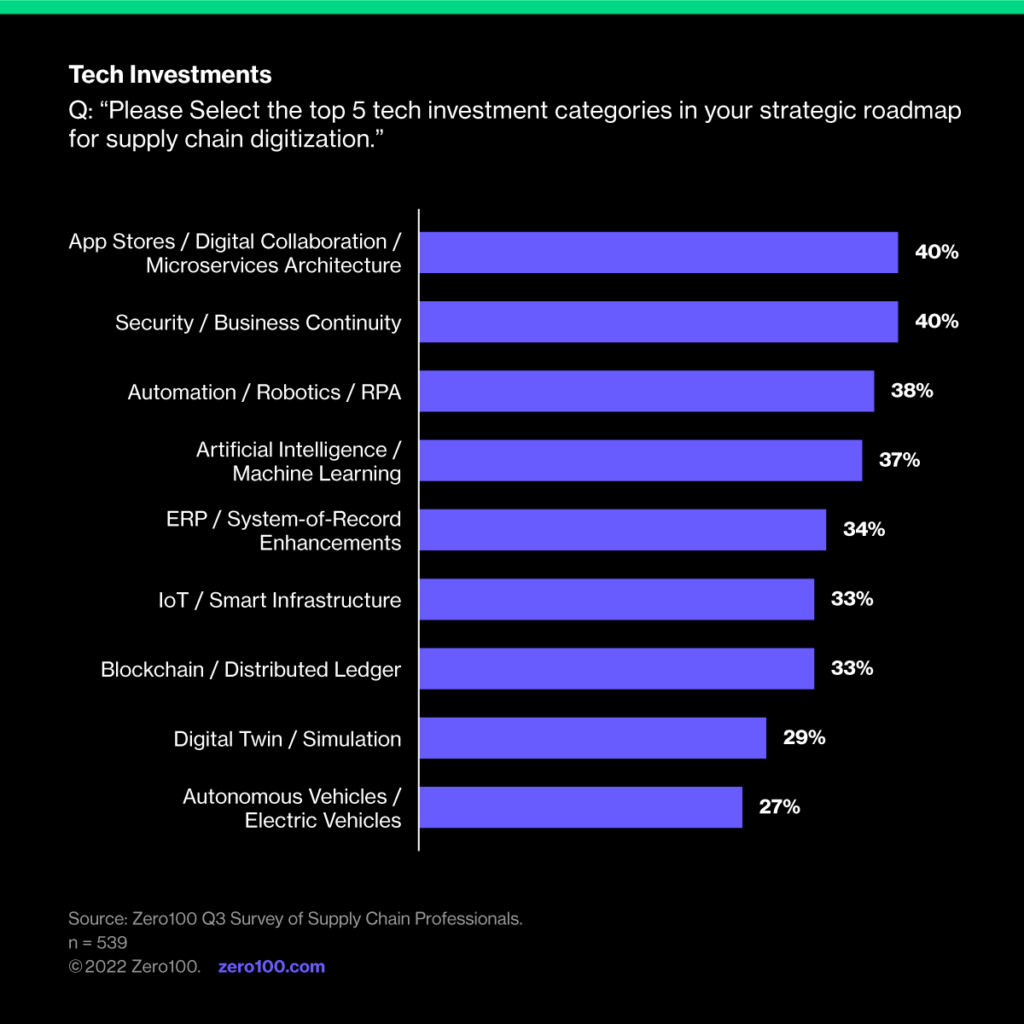
Stress Test Your Digital Roadmap for Resilience and Recovery
As we approach the end of a challenging year, building resiliency into digital roadmaps is a top priority for organizations. But how will the investments made now fare once growth picks back up?
With 2022 nearing its end, many supply chain organizations are now putting finishing touches on digital roadmaps. The question to ask yourself is not only how resilient you can be through a rocky 2023, but also whether the investments you're making now will work when growth picks up again.
Here are six capability checks to stress test your digital roadmap for both:
1. Cloud Capability – This is about having a foundation for flexible tech deployment. It is not enough to have open APIs if new tools take years to turn on. Having in-house tech people capable of UX design, app development, beta-testing and maintenance is a huge help. Digital roadmaps should also include plans for skill building as well as for software. Amazon, Walmart, Honeywell, Volkswagen, and Thermo Fisher Scientific are all cloud capable. SAP Hana, Microsoft Azure, AWS, IBM, and Oracle are all ready to help you learn. This is not a simple move, but without it you'll be slow to pivot when the time comes to grow.

2. Demand Chain Awareness – Customer order history and business revenue forecasts are not much help responding to surprise opportunities in market demand. Channels are changing super-fast as e-commerce mushrooms from simpler pre-COVID days when online was a small slice of overall demand. Plus, customers' user experience is now a huge part of the demand ecosystem with social media, YouTube videos, and connected devices creating oceans of data to consider in supply planning and product design. IoT-aware brands Caterpillar, Hewlett Packard, and Samsung get this. So do retailers like Argos and Lowe's, and savvy consumer brands like Nike, Sleep Number, and of course, Apple. It may just be a data lake now, but longer term, this is a must-have on your digital roadmap.
3. Collaborative Competence – Supplier visibility and connectivity have been a topic for decades, but too little progress has been made building tech platforms that help sourcing teams solve problems collaboratively with key suppliers. Tech roadmaps should include some amount of collaborative planning to help find alternatives when supply is tight and add upside when things pick up. Better yet, look for tools and tactics that help sequence deliveries and solve for substitutes when needed. Great examples of this competence come from automotive, like Toyota, and aerospace, like Boeing.
4. Data Competence – “Data is the new oil” may be a cliché, but there's something to it. Data is increasingly diverse in its sources and uses for business strategy. Like oil, data can be gathered, refined, and turned into countless operational tools. Data has a lifecycle that shadows how customers experience your product. Master data strategies in your roadmap should lean into this. Content businesses like Netflix, Google and even Disney have it done for years. Be wary of data lakes that become black holes: everything goes in, but nothing comes out.
5. Carbon Consciousness – 90% of Scope 3 carbon is in supply chain. Net-Zero commitments are everywhere, and regulations or carbon taxes are imminent in many markets. And yet, no true standards for carbon measurement, accounting, and reporting exist. Carbon may be deprioritized next year, but that doesn't mean you'll be forgiven later when its back on the agenda. Digital roadmaps should include carbon tracking even if it's still based on proxy measures. Tools like Ecovadis, Project 44, Sphera, Sourcemap, and Flexport's Carbon Calculator offer diverse, but mostly nascent capabilities. Still, something like this belongs in your plan.
6. C3OP – IBP is on everyone's roadmap, appropriately, but it needs to start solving for carbon too. The five capability checks above enable a planning process that is cloud-flexible and data-competent to optimize for customers, cash, and carbon (C3OP). S&OP is the old-school foundation and a good place to start. Faster cycle decision-making, what-if planning, and carbon-aware problem solving will be best practice within three years. It is the most important capability your roadmap can deliver for 2023 and beyond.
Resilience Means Bouncing Back
Digital roadmaps, now more than ever before, should focus on enabling operational agility. Agility is the prize because it's the key to resilience, responsiveness, and responsibility – that's a recipe that should get you through the dip and help you ride the recovery back to the top.
Critical Reading
SUPPLY CHAIN DIVE
UNFI to Add Indoor Farms at Select Distribution Centers
Commentary: Indoor and vertical farming is a growing trend among grocers. UNFI expand their unique capabilities with retail grocers like Albertsons.
#sustainabilty #agriculture
SEATTLE TIMES
Microsoft Software Tackles Customer Supply-Chain Disruptions
Commentary: Microsoft Supply Chain Center has been previewed as their newest tool to actualize supply chain resiliency. With industries facing economic, environmental, and supply disruption, could this tool mitigate our issues?
#resiliency #microsoft
GREENBIZ
The Next Generation of Carbon-Free Energy Procurement
Commentary: Clean energy procurement is essential to reaching the carbon reduction goals supply chains have set out for themselves. Better reporting, data investments, and new strategic approaches are the key.
#cleanenergy #carbon